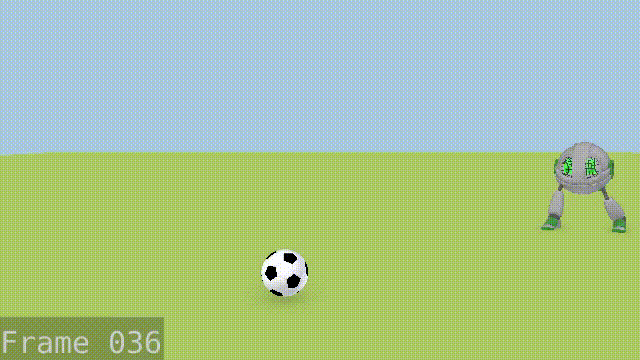Welcome welcome! August will probably be remembered best in Australia for when yet another prime minister got knifed by wreckers in his own party, more notably this time because said wreckers had two goes in a single week and didn’t even get their guy in. My country is evidently being run by evil clowns.
Fun with animation
I handed in another animation exercise on the CG Cookie course, this time the splined and polished version of the robot jump. Here’s a fully rendered version which I probably shouldn’t have rendered because there’s a ton of stuff I ought to fix. Ah, here it is anyway. (Animation is mine; Rivet character supplied by CG Cookie.)
Later on in the month I came down with a cold. I tried to power through the fatigue and snot to make a start on the next animation exercise, but.. well..

Definitely going back to the drawing board to give that another try.
Fun with beeps
Speaking of robots, some more beepy things arrived this month. Here’s a trancey techno jam.
I also finally replaced a dud trimpot in my trapezoid through-zero quadrature VCO and got it working properly! Here is some filthy modular techno to celebrate.
Fun with Twitter
Right at the end of the month, I RTed this tweet from Oscar-winning animation director Brad Bird who was complaining about same-day cinema and streaming releases:
And with it will disappear showmanship: a filmmakers last bit of control over how their work is seen (an audience, in a dark room, huge screen, sound at reference level, no phone calls, dog barks or PAUSE button, no skipping ahead, no replaying the cool thing that just happened). https://t.co/imbANEyazN
— Brad Bird (@BradBirdA113) August 29, 2018
Fair call, but I RTed him anyway with this:
https://twitter.com/quollism/status/1034991691239845893
To my shock, I got RTed by none other than Oscar-winning animation director Brad Bird!
Good for a smartphone?
(Writing in pad) Shoot… everything… in… close-up.
✅ Got it! https://t.co/aY4TSbbWJo— Brad Bird (@BradBirdA113) August 30, 2018
Not exactly what I said but let’s assume he was being a bit sarcastic. 🙂
I then received many direct and indirect responses to the effect of “you’re wrong”, the famous video where David Lynch gives his opinion about watching movies on phones, “David Lynch would straight up kill you for saying this” (which turned into a thread about how David Lynch would make his move and who would try to kill me in the sequel), and a news story about Darren Aronofsky mixing his sound so it plays OK on iPhones and how Quentin Tarantino found this depressing.
I used a smartphone as an example because it’s small and unflattering, but the smartphone thing seems to upset the cinephile set who see smartphones as the Devil, the Anti-Christ of cinema! David Lynch didn’t complain about back-of-airplane-seat screens – he complained about smartphones, damnit!
So what would possess me to opine something so sacreligious to the idea of cinema? Well, here it is: if a movie still connects with the viewer powerfully on the display equivalent of Auratones, if it manages to cut through on an unforgivingly small screen with crappy headphones without the grand sensory experience of a cinema screen and sound system for support, it’s probably a pretty good movie! That’s all I meant.
(That and if studios sell movies on VOD, I shouldn’t struggle to read any narratively important information off diegetic screens. Looking at you, Blade Runner 2097…)
Brad Bird is a top-flight filmmaker and I’m sure his movies would pass a “smartphone” test whether he made explicitly sure they did or otherwise. I’m more baffled that he chose to RT me. Snarking on the quaint opinion of one lowly random to 132K followers isn’t really a fair fight. Thankfully there’s been no threats of death or rape yet so apparently Brad Bird’s fans are relatively level-headed, but I’ll keep everyone posted if it turns out there’s some cinephile psycho killer whose favourite movie was The Iron Giant.
See you in September, assuming David Lynch doesn’t come and deal with me first.
